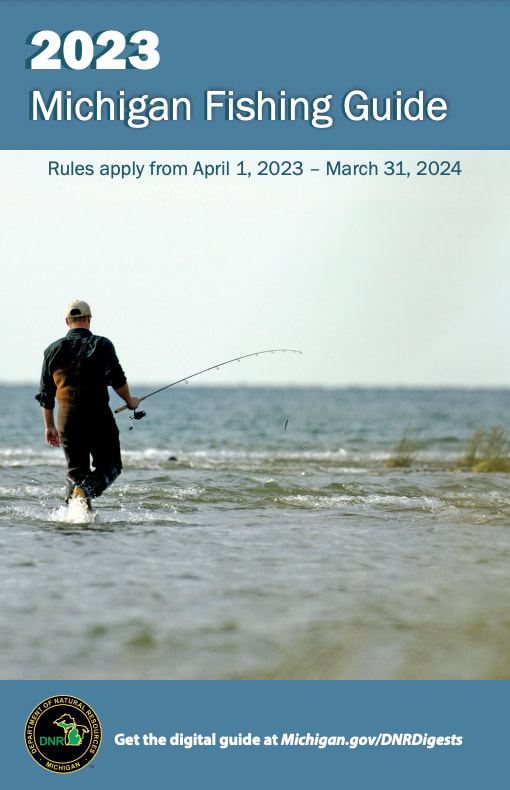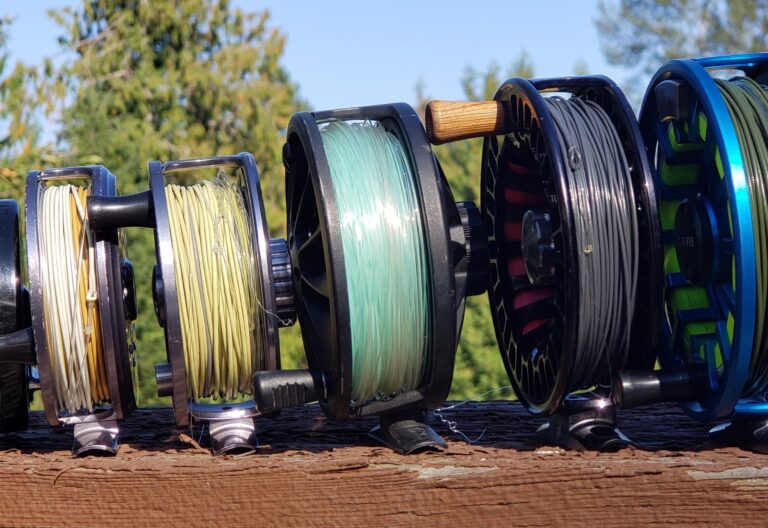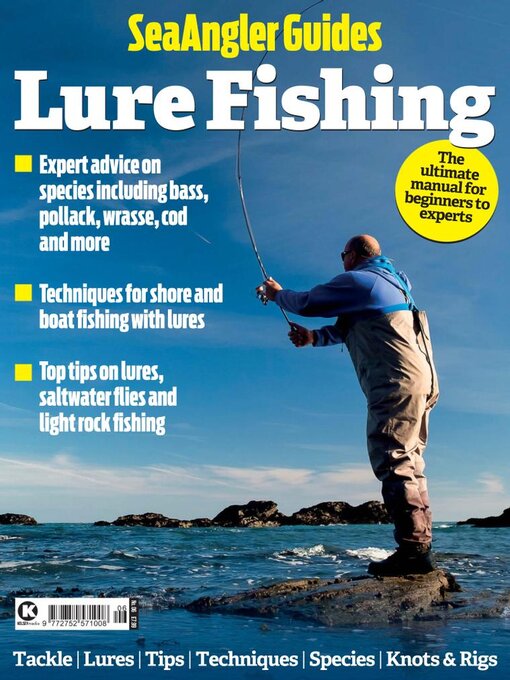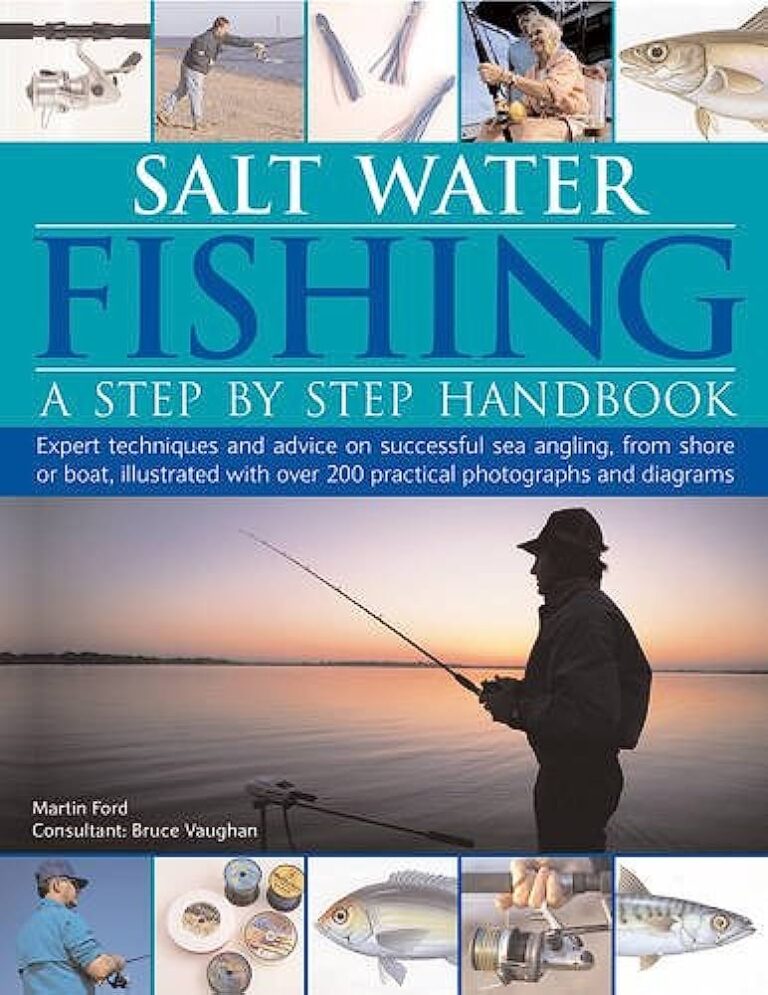With a fly rod, you can catch a variety of fish, including trout, salmon, bass, and panfish. Fly fishing is a popular technique that involves using a specialized rod and line to cast lightweight flies onto the water’s surface to entice fish to bite.
The sport requires skill and finesse, as anglers must mimic the insects or other prey that fish are feeding on. Fly fishing can be enjoyed in a range of habitats, from rivers and lakes to saltwater flats and streams. Whether you’re a beginner or an experienced angler, fly fishing offers an exciting and rewarding way to target a wide range of fish species.

Credit: www.billjacksons.com
Understanding The Basics Of Fly Fishing
The History Of Fly Fishing
- Fly fishing has a rich history dating back thousands of years.
- The first evidence of fly fishing can be traced back to ancient egypt and the roman empire.
- In medieval times, fly fishing gained popularity as a recreational activity.
- The modern form of fly fishing began to take shape in the 19th century with the development of new techniques and equipment.
- Today, fly fishing is enjoyed by millions of people around the world, from beginners to experienced anglers.
Fly Fishing Gear: The Fly Rod, Reel, And Fly Line
- The fly rod is the most important piece of equipment in fly fishing. It is used to cast the fly and reel in the fish.
- Fly rods come in different lengths and weights, depending on the type of fishing and the size of the fish.
- The fly reel is attached to the rod and is used to hold the fly line and provide drag when reeling in a fish.
- The fly line is the line that is cast out into the water. It is specially designed to float or sink depending on the fishing technique.
- Choosing the right fly rod, reel, and fly line is crucial for a successful fly fishing experience.
Fly Fishing Techniques: Casting, Presentation, And Drift
- Casting is the act of throwing the fly line and fly rod out into the water. It requires skill and precision.
- There are different casting techniques, such as the overhead cast, roll cast, and spey cast.
- Presentation refers to how the fly is presented to the fish. It should mimic the natural movement of insect or baitfish.
- A good presentation is essential for attracting fish and getting them to bite.
- Drift is the movement of the fly on the water’s surface. It should mimic the natural drift of insects or baitfish in the current.
The Different Types Of Flies Used In Fly Fishing
- Flies are artificial lures that imitate insects, baitfish, or other natural prey of fish.
- There are three main types of flies used in fly fishing: Dry flies, wet flies, and streamers.
- Dry flies are designed to float on the water’s surface and imitate adult insects or emerging insects.
- Wet flies are designed to sink below the water’s surface and imitate underwater insects or baitfish.
- Streamers are larger flies that imitate minnows or other small fish. They are usually retrieved with fast motions to imitate a wounded fish.
By understanding the basics of fly fishing, including the history, gear, techniques, and types of flies, you will be well-equipped to venture into this exciting and rewarding sport. Whether you are a beginner or an experienced angler, fly fishing offers a unique and enjoyable fishing experience.
So grab your fly rod, reel, and flies, and head out to the water to see what fish you can catch!
Targeting Freshwater Fish Species
Fly fishing with a fly rod opens up a world of exciting possibilities for anglers. With the right techniques, gear, and knowledge, you can target a wide variety of freshwater fish species. In this section, we will explore the different fish you can catch with a fly rod and provide expert advice and tips for each.
So, let’s dive in!
Trout Fishing With A Fly Rod: Tips And Tricks
Trout fishing is a popular choice for fly anglers, providing thrilling fights and a rewarding experience. Here are some tips and tricks to enhance your trout fishing adventures:
- Choosing the right flies for trout fishing:
- Dry flies: These imitate insects floating on the water’s surface, such as mayflies or caddisflies.
- Nymphs: These imitate aquatic insects in their underwater stage, like mayfly nymphs or stonefly nymphs.
- Streamers: These mimic small fish or baitfish, enticing larger trout to strike.
- Best times and locations for trout fishing:
- Early morning and late evening: Trout are more active during these times, seeking food in cooler temperatures.
- Streams and rivers: These offer excellent trout habitat, including riffles, pools, and runs.
- Coldwater lakes: Look for trout in deeper waters, near drop-offs or submerged structures.
- Fly fishing techniques for trout:
- Drift and mend: Allow your fly to drift naturally with the current, mending the line to achieve a drag-free presentation.
- Indicator fishing: Use a strike indicator to detect subtle strikes from trout feeding below the surface.
- Streamer stripping: Strip the streamer back towards you, enticing aggressive strikes from territorial trout.
Bass Fishing With A Fly Rod: Expert Advice
Bass fishing with a fly rod provides a unique challenge and can be incredibly rewarding. Here’s some expert advice for targeting bass with a fly rod:
- Selecting the right flies for bass fishing:
- Popper flies: These surface flies create enticing pops and splashes, imitating wounded prey.
- Clouser minnows: These imitate baitfish and are effective for both largemouth and smallmouth bass.
- Woolly buggers: These versatile flies can be stripped or retrieved slowly, resembling various prey.
- Where to find bass and fly fishing strategies:
- Shallow areas with cover: Bass love to hide among lily pads, fallen timber, or submerged vegetation.
- Slow presentations: Retrieve your fly at a moderate pace, imitating injured prey that bass find irresistible.
- Sight fishing: Look for cruising or bedding bass and target them directly with accurate casts.
- Tips for effective bass fishing with a fly rod:
- Focus on structure: Target areas with rocks, submerged logs, or drop-offs where bass tend to congregate.
- Vary your retrieves: Experiment with different retrieval styles, such as steady, erratic, or pause-and-go.
- Use stealth: Approach bass cautiously, as they can be easily spooked, especially in clear water.
Panfish And Sunfish: Fly Fishing Tips And Tricks
Panfish and sunfish present an excellent opportunity for fly anglers to enjoy fast action and lightweight tackle. Here are some tips and tricks for catching panfish and sunfish with a fly rod:
- Recommended flies for panfish and sunfish:
- Small dry flies: Use sizes 10 to 16 dry flies, such as foam beetles or small poppers, to entice lively panfish bites.
- Wet flies and nymphs: Try fishing with small wet flies or nymphs like bead head prince nymphs or soft hackles.
- Tactics for catching panfish and sunfish with a fly rod:
- Present your fly near structure: Panfish and sunfish love to hide around submerged vegetation or fallen tree branches.
- Cast and retrieve: Use short, accurate casts and maintain a slow, steady retrieve to entice strikes.
- Watch for subtle strikes: Panfish and sunfish often take flies gently, so keep a close eye on your line for any unusual movement.
- Best spots and seasons for panfish and sunfish:
- Shallow waters: Panfish and sunfish tend to stay in shallow areas, making them accessible to fly anglers.
- Spring and summer: These seasons offer more active feeding patterns for panfish and sunfish.
Fly fishing with a fly rod can be a thrilling and rewarding experience, whether you’re targeting trout, bass, or panfish. With the right techniques, gear, and knowledge, you can maximize your success on the water. So, grab your fly rod and start exploring the wonders of freshwater fishing!
Exploring Saltwater Fly Fishing Opportunities
Saltwater Fly Fishing: A Beginner’S Guide
—————————————————
Saltwater fly fishing opens up a whole new world of angling opportunities for both beginners and experienced anglers alike. If you’re interested in exploring this exciting form of fishing, here is a beginner’s guide to get you started:
- Understand the basics: Saltwater fly fishing involves casting a lightweight fly line and fly lure to entice fish to bite. Unlike traditional fishing, where you use heavy bait or lures, saltwater fly fishing relies on the angler’s ability to mimic the movements of natural prey.
- Practice casting: Mastering your casting technique is crucial for saltwater fly fishing success. Spend time practicing your casting to improve accuracy and distance. It’s recommended to practice in an open space or on the water to simulate real fishing conditions.
- Learn the tides and currents: Understanding the tides and currents of the saltwater bodies you’re fishing in is essential. These factors influence where fish congregate and feed, increasing your chances of a successful catch. Research local tidal charts and learn about the best times to fish.
- Be patient and observant: Patience is key when it comes to saltwater fly fishing. Pay close attention to the surroundings, watching for signs of fish activity such as splashing or birds diving. Being observant will give you valuable insights into where the fish are located and increase your chances of hooking a catch.
- Seek professional guidance: If you’re new to saltwater fly fishing, it’s advisable to seek guidance from experienced anglers or hire a fishing guide. They can teach you techniques specific to saltwater fly fishing and provide insights into local fish species and their behaviors.
Essential Gear For Saltwater Fly Fishing
——————————————
Before heading out for a saltwater fly fishing adventure, it’s crucial to have the right gear. Here are some essential items you’ll need:
- Fly rod and reel: Invest in a saltwater-specific fly rod and reel that can handle the demands of casting in saltwater conditions. A rod with a fast action and a reel with a strong drag system are ideal for tackling larger saltwater species.
- Fly line: Choose a weight-forward or shooting taper fly line specifically designed for saltwater fishing. The line should have a strong core and a saltwater-resistant coating to handle the harsh saltwater environment.
- Leaders and tippets: Saltwater fly fishing requires sturdy leaders and tippets to handle the aggressive strikes of saltwater species. Opt for fluorocarbon leaders and tippets, as they are less visible in the water and have superior abrasion resistance.
- Flies and fly storage: Stock up on a variety of saltwater flies that imitate the prey species found in your fishing area. Keep them organized and easily accessible with a fly box designed for saltwater conditions. Consider carrying patterns such as clousers, deceivers, and shrimp imitations.
- Polarized sunglasses: Polarized sunglasses are essential for saltwater fly fishing as they reduce glare and enable better visibility into the water. They not only protect your eyes from harmful uv rays but also help you spot fish and underwater structures.
Choosing The Right Flies For Saltwater Species
—————————————————–
When it comes to saltwater fly fishing, choosing the right flies is crucial. Here are some key considerations to keep in mind:
- Research local species: Different species of fish in saltwater have specific preferences when it comes to prey. Research the fish species you’re targeting and understand the primary food sources they rely on. This will help you select the most suitable flies to imitate their natural prey.
- Match the hatch: Observing the prevalent prey items in the area and selecting flies that closely resemble them is a highly effective strategy. Pay attention to the size, color, and shape of the natural baitfish or crustaceans, and match your flies accordingly.
- Vary your retrieves: Experiment with different retrieves to mimic the movement of the prey. Some fish prefer fast, erratic retrieves, while others respond better to slow and subtle movements. Adapting your retrieve technique can make a significant difference in triggering strikes.
- Stay versatile: Carry a range of fly patterns in different sizes, colors, and weights to cater to different fishing conditions. Be open to trying new patterns or modifying existing ones based on the fish’s response and the changing conditions.
Fly Fishing Techniques For Saltwater Fish
————————————————
Mastering various fly fishing techniques is essential for success in saltwater fishing. Here are some techniques to consider:
- Stripping: The stripping technique involves retrieving the fly by pulling short strips of the line. This imitates the movement of baitfish or crustaceans and can entice predatory fish to strike. Vary the speed and length of your strips to find the most effective retrieve.
- Popping: Popping is commonly used when targeting aggressive surface-feeding species like tarpon or redfish. It involves making short, abrupt movements with the fly to create splashes and attract attention. Pause between pops to allow the fish to locate the fly before stripping it in.
- Dropping: When fishing in deeper water or targeting fish holding near the bottom, the dropping technique is effective. Cast the fly near the desired area and let it sink naturally. Then, retrieve it slowly with subtle movements to mimic a struggling or injured prey.
- Sight casting: Sight casting is an exhilarating technique that involves spotting fish in the water and making precise casts to them. Utilize polarized sunglasses and scan the water for signs of fish activity. Once you spot a fish, carefully present your fly in its path and anticipate the strike.
Fly Fishing For Bonefish: Expert Advice
—————————————————
Bonefish are highly prized saltwater game fish known for their speed and elusive nature. Here’s expert advice for fly fishing for bonefish:
- Tackle and gear: Opt for a 7-9 weight fly rod with a saltwater reel capable of holding a sufficient amount of backing. Use a weight-forward floating fly line and a 9-12 foot fluorocarbon leader with a tippet in the 10-16 lb range.
- Fly selection: Bonefish primarily feed on crustaceans such as shrimp and crabs. Carry a selection of bonefish flies such as gotchas, crazy charlies, and small crab patterns. Vary the size and color based on water clarity and fishing conditions.
- Fishing strategies: Look for bonefish in shallow, sandy flats during incoming tides. They are often found in schools or small groups, known as “tails” or “muds.” Make accurate casts ahead of the fish and allow the fly to sink slowly before retrieving with short, quick strips.
- Locations and seasons: Bonefish are found in warm, shallow waters of tropical and subtropical regions. Prime bonefish destinations include the florida keys, bahamas, belize, and the seychelles. The best time for bonefish fishing is usually during spring and fall when water temperatures are favorable.
Tarpon Fly Fishing: Tips And Techniques
———————————————-
Tarpon, known for their acrobatic leaps and incredible strength, are a dream catch for many fly anglers. Here are some tips and techniques for tarpon fly fishing:
- Rigging and gear: Use a 10-12 weight fly rod paired with a large arbor reel that can hold at least 200 yards of backing. Choose a tropical saltwater floating fly line and a 9-12 foot fluorocarbon or monofilament leader with a 30-60 lb bite tippet.
- Fly selection: Tarpon feed on a variety of prey such as baitfish, crabs, and shrimp. Carry a selection of tarpon flies including large streamers like tarpon toads, bunny leeches, and ep-style baitfish imitations. Ensure your flies have strong hooks to handle tarpon’s bony mouths.
- Fishing strategies: Look for tarpon in shallow waters near mangroves, flats, or deep channels. These fish are often found in schools or rolling pods. Present your fly ahead of the fish and let it sink before beginning your retrieve. Tarpon usually take flies with explosive strikes, so be prepared for a thrilling fight.
- Prime locations and time: Tarpon can be found in warm coastal waters of the atlantic ocean, gulf of mexico, and the caribbean. Famous tarpon fishing destinations include florida, costa rica, and mexico. The peak tarpon season varies depending on the location, but generally runs from spring through early fall.
Remember, saltwater fly fishing is a continuous learning process, and every fishing situation is unique. With practice, patience, and the right techniques, you’ll gradually improve your skills and enjoy the thrill of hooking into some incredible saltwater species. So, gear up, do your research, and get ready for an unforgettable saltwater fly fishing adventure!
Conclusion
A fly rod opens up a world of possibilities for anglers seeking to catch a wide range of fish. From trout and salmon to bass and pike, the versatility of a fly rod allows for a thrilling and rewarding fishing experience.
Whether you prefer still waters or fast-flowing rivers, there is a fish species waiting to be caught with your fly rod. By understanding the habits and habitats of different fish, and selecting the right flies and techniques, you can increase your chances of success.
Exploring different fishing locations and adapting to changing conditions will also enhance your fly fishing skills. So, grab your fly rod, tie on your favorite fly pattern, and head out to the water. With patience, practice, and a sense of adventure, you’ll discover the joy of catching various fish species with your fly rod, creating unforgettable memories in the process.
Happy fly fishing!





